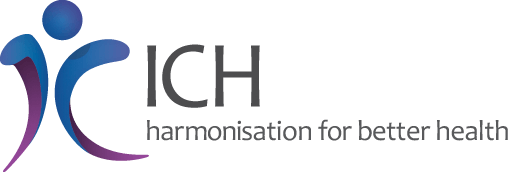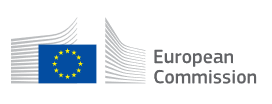Details of the Regulatory guidelines for pharmaceutical industry including ICH Quality Guidelines, US-FDA, Eudralex, PIC/S, WHO and ISO for stability analysis, evaluation of impurities, quality risk management and analytical procedure development etc.
ICH Quality Guidelines

Q1 : Stability testing
- Q1A (R2) : Stability testing of new drug substances and products
- Q1B : Stability testing: Photostability testing of new drug substances and products
- Q1C : Stability testing for new dosage forms
- Q1D : Bracketing and Matrixing Designs for Stability Testing of New Drug Substances and Products
- Q1E : Evaluation for Stability Data
- Q1F : Stability Data Package for Registration Applications in Climatic Zones III and IV
Q2 : Analytical Validation
- Q2(R1): Validation of Analytical Procedures: Text and Methodology
- Q2(R2)/Q14 EWG : Analytical Procedure development and Revision of Q2 (R1) Analytical Validation
Q3: Impurities
- Q3A(R2) – Impurities In New Drug Substances
- Q3B(R2) – Impurities In New Drug Products
- Q3C(R8) – Guideline for Residual Solvents
- Q3D(R2) – Guideline for Elemental Impurities
Q4: Pharmacopoeias
- Q4A – Pharmacopoeial Harmonization
- Q4B – Evaluation and Recommendation of Pharmacopoeial Texts for Use in the ICH Regions
- Q4B Annex 1 – Residue on Ignition/Sulphated Ash
- Q4B Annex 2 – Test for Extractable Volume of Parenteral Preparations
- Q4B Annex 3 – Test for Particulate Contamination: Sub-Visible Particles
- Q4B Annex 4 – Microbiological Examination of Non-Sterile Products: Microbial Enumeration Tests
- Q4B Annex 5 – Disintegration Test
- Q4B Annex 6 – Uniformity Dosage Units
- Q4B Annex 7 – Dissolution Test
- Q4B Annex 8 – Sterility Test
- Q4B Annex 9 – Tablet Friability
- Q4B Annex 10 – Polyacrylamide Gel Electrophoresis
- Q4B Annex 11 – Capillary Electrophoresis
- Q4B Annex 12 – Analytical Sieving
- Q4B Annex 13 – Bulk Density and Tapped Density of Powders
- Q4B Annex 14 – Bacterial Endotoxins Test
Q5: Quality of Biotechnological Products
- Q5A (R1) – Viral Safety Evaluation of Biotechnology Products Derived from Cell Lines of Human or Animal Origin
- Q5B – Analysis of the Expression Construct in Cells used for Production of r-DNA Derived Protein Products
- Q5C – Quality of Biotechnological Products: Stability testing of Biotechnological/ Biological Products
- Q5D – Derivation and Characterisation of Cell Substrates Used for Production of Biotechnological/ Biological Products
- Q5E – Comparability of Biotechnological/ Biological Products Subject to Changes in their Manufacturing Process
Q6: Specifications
- Q6A – Specifications: Test Procedures and Acceptance Criteria for New Drug Substances and New Drug Products: Chemical Substances
- Q6B – Specifications: Test Procedures and Acceptance Criteria for Biotechnological/ Biological Products
Q7 : Good Manufacturing Practice Guide for Active Pharmaceutical Ingredients
Q8(R2): Pharmaceutical Development
Q9 (R1) : Quality Risk Management
Q10: Pharmaceutical Quality System
Q11: Development and Manufacture of Drug Substances (Chemical Entities and Biotechnological/ Biological Entities)
Q12: Technical and Regulatory Considerations for pharmaceutical products lifecycle management
Q13: Continuous Manufacturing of Drug Substances and Drug Products
Q14: Analytical Procedure Development
EudraLex guidelines

- Volume 4 – Good Manufacturing Practice (GMP) guidelines
- Volume 1 -EU pharmaceutical legislation for medicinal products for human use
- Volume 5 -EU pharmaceutical legislation for medicinal products for veterinary use
- Volume 2 -Regulatory guidelines for medicinal products for human use
- Volume 6 -Regulatory guidelines for medicinal products for veterinary use
- Volume 3 -Scientific guidelines for medicinal products for human use
- Volume 7- Scientific guidelines for medicinal products for veterinary use
- Volume 8 – Maximum residue limits
- Volume 9 – Guidelines for pharmacovigilance
- Volume 10 – Guidelines for Clinical trial
- Medicinal products for paediatric use
- Orphan medicinal products
- Herbal medicinal products
- Advanced therapies: New medical products that use gene therapy, cell therapy and tissue engineering.
- EudraBook
US-FDA Guidelines

- Title 21 CFR Part 210 : Current good manufacturing practice (cGMP) in Manufacturing, Processing, Packing, or Holding of Drugs
- Title 21 CFR Part 211 : Current good manufacturing practice (cGMP) for finished pharmaceuticals
- Title 21 CFR Part 11 : Electronic Records; Electronic Signatures – Scope and Application
- Current good manufacturing practice (cGMP) for outsourcing facilities
- Current Good Manufacturing Practice (cGMP) for PET Drugs
- Current Good Manufacturing Practice Requirements for Combination Products
- Good Laboratory Practice
- Guidance for Generic Drug Development
- Process Validation
- Orange Book
- Control of Nitrosamine Impurities in Human Drugs
- Risk for Melamine Contamination
- Dioxin/PCB Contamination
- Pyrogen and Endotoxins Testing
- Testing of Glycerin for Diethylene Glycol
- Investigating Out-of-Specification (OOS) Test Results for Pharmaceutical Production
- Non-Penicillin Beta-Lactam Drugs : A CGMP Framework for Preventing Cross-Contamination
- Risk Management Plans (RMPs) to Mitigate the Potential for Drug Shortages
- Quality Systems Approach
- Expiration Dating of Unit-Dose Repackaged Solid Oral Dosage Form Drug Products
- Data Integrity and Compliance with Drug cGMP
- Computerized Systems Used in Clinical Investigations
- Mechanical Calibration of Dissolution Apparatus 1 and 2
- Process Analytical Technology – PAT
- Expiration Dating and Stability Testing of Drugs Containing Iron
- Preparation of Investigational New Drug (IND) Products
- Good ANDA Submission Practices
- bioavailability (BA) and bioequivalence (BE) Study
- Scale-Up and Post-Approval Changes: SUPAC-IR
- Scale-Up and Post-Approval Changes: SUPAC-MR
- 180-Day Generic Drug Exclusivity under the Hatch-Waxman act
- Labeling OTC Products
- Drug Master Files
- Annual Report
The Pharmaceutical Inspection Co-operation Scheme (PIC/S) Guidelines

PIC/S GMP Guide
WHO Guidelines

WHO GMP Guide
International Organization for Standardization – ISO Guidelines

- ISO 9001 : 2015 — Quality Management
- ISO 14001: 2015 — Environmental Management
- ISO 18001 — Safety & Health Management
- ISO 45001 — Occupational health and safety
- ISO 31000 — Risk management
- ISO 50001 — Energy management
- ISO 22001 — HAZOP (Hazard and operability study) Standard Management
- ISO 13485 — QMS standard for the medical device industry
- ISO 2859 — Inspection Sampling or AQL
- ISO/IEC 17025 — Testing and calibration laboratories
- ISO/IEC 27001:2022 —Information security, cybersecurity and privacy protection